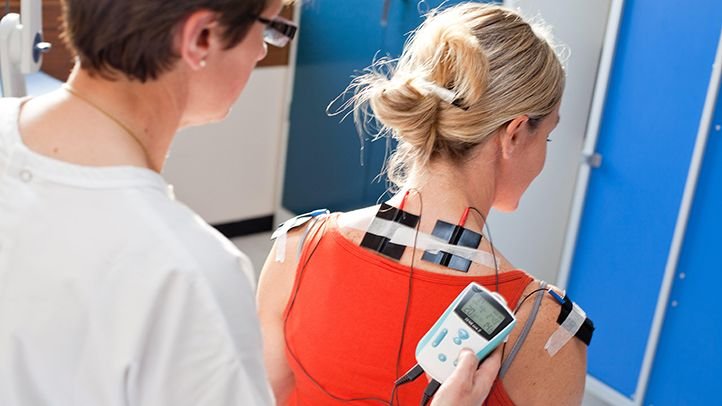Living with fibromyalgia can be an ongoing battle against pain and fatigue, often limiting one’s ability to engage in daily activities. Transcutaneous Electrical Nerve Stimulation, commonly known as TENS, presents a promising avenue for managing these symptoms and regaining a semblance of normalcy. In this article, we’ll delve into the science behind TENS, explore its benefits, and understand how it can be integrated effectively into daily routines for enhanced pain relief and improved quality of life.
Understanding Fibromyalgia: A Quick Overview
Fibromyalgia is a complex condition that affects the musculoskeletal system, causing widespread pain, tenderness, and stiffness. It often coexists with other conditions like sleep disturbances, headaches, and irritable bowel syndrome, making its management a multifaceted challenge. The exact cause of fibromyalgia remains elusive, but researchers believe it involves a combination of genetic, environmental, and psychological factors.
What is Transcutaneous Electrical Nerve Stimulation (TENS)?
TENS is a non-invasive pain management technique that utilizes low-frequency electrical currents to stimulate nerve fibers through electrodes placed on the skin’s surface. By doing so, TENS can modulate pain signals, leading to reduced discomfort and improved overall well-being. TENS devices come in various forms, from portable units for home use to more advanced options available under medical supervision.
The Mechanism Behind TENS’ Pain-Relieving Effects
TENS operates on the gate control theory of pain, where electrical stimulation of nerve fibers competes with pain signals, effectively “closing the gate” to pain perception. Moreover, TENS encourages the release of endorphins, the body’s natural painkillers, promoting a sense of relief and relaxation.
Benefits of TENS for Fibromyalgia Management
Pain Reduction
TENS offers a drug-free approach to pain relief, which is particularly valuable for individuals who prefer to avoid pharmaceutical interventions. Its localized application allows for precise targeting of painful areas, providing swift and targeted relief.
Improved Blood Circulation
The electrical stimulation from TENS helps dilate blood vessels, enhancing blood circulation to affected areas. Improved blood flow can reduce inflammation, promote healing, and alleviate pain.
Enhanced Endorphin Release
TENS prompts the release of endorphins, which are not only natural pain suppressors but also contribute to an improved mood. This dual effect can positively impact both physical and mental well-being.
Incorporating TENS During Activity: How It Makes a Difference
Using TENS during physical activity can offer a unique advantage. The stimulation during movement helps override pain signals, enabling individuals to engage in exercises that might otherwise be too painful. This newfound activity can lead to improved flexibility, strength, and overall health.
Selecting the Right TENS Device
Choosing the right TENS device is crucial for optimal results. Factors to consider include the device’s settings, electrode placement, and user-friendliness. Consulting a healthcare professional can provide valuable guidance in selecting the most suitable device for individual needs.
Tips for Using TENS Effectively
- Clean and Prep the Skin: Ensure the skin is clean and dry before applying electrodes to promote good conductivity.
- Start at Low Intensity: Begin with low intensity settings and gradually increase as comfort allows.
- Experiment with Electrode Placement: Try different electrode placements to determine what works best for targeted relief.
- Stay Consistent: Regular use of TENS, as advised by a healthcare professional, can yield better and sustained results.
Case Studies: Real-Life Success Stories
Numerous individuals with fibromyalgia have reported significant improvements in pain and fatigue through consistent TENS use. Sarah, a 42-year-old, found relief in TENS during her yoga sessions, allowing her to fully participate and enjoy the practice without constant discomfort.
Combining TENS with Other Pain Management Strategies
TENS can complement other pain management strategies, such as medication, physical therapy, and relaxation techniques. Its versatile nature makes it a valuable tool in the broader toolkit for managing fibromyalgia.
Staying Active with Fibromyalgia: Overcoming Challenges
Staying active with fibromyalgia can be a challenge, but TENS can play a pivotal role in overcoming this obstacle. By reducing pain during physical activities, TENS encourages a more active lifestyle, contributing to better overall health and well-being.
Safety Precautions and Considerations
While TENS is generally safe, certain precautions should be taken. Consultation with a healthcare professional is recommended, especially for those with pacemakers, epilepsy, or other medical conditions. Following manufacturer instructions and avoiding electrode placement near the eyes, head, or heart is also crucial.
Addressing Common Concerns About TENS
Is TENS Safe for Everyone?
TENS is safe for many individuals, but consultation with a healthcare professional is advised, especially for pregnant women, individuals with cardiac conditions,








